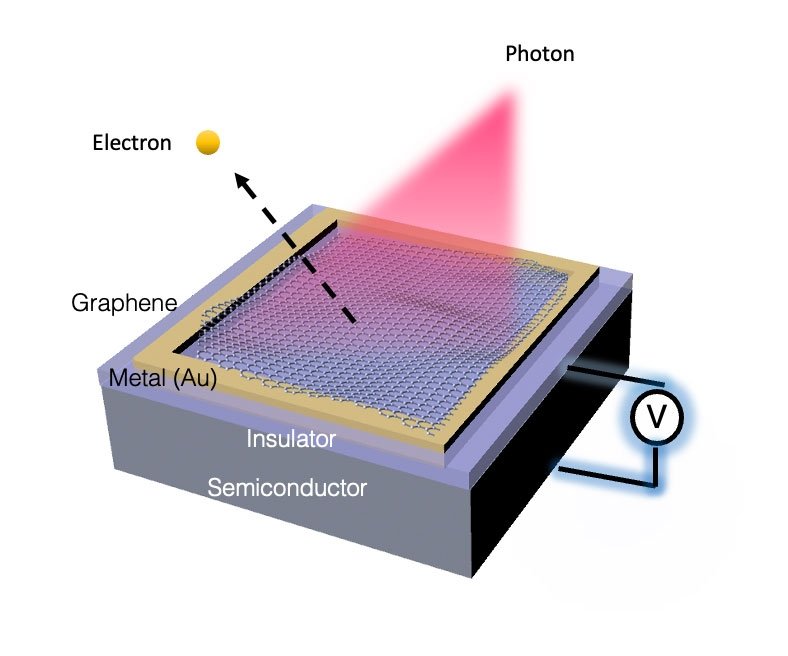| Oct 11, 2023 |
Tuning a fundamental material property with a graphene-insulator coating
(Nanowerk News) The energy it takes to eject an electron from a material is a fundamental property – one that determines how electrons flow. This is one of the key properties scientists must consider when designing devices. If a device requires changes to this property, the only option is to find a new material that works for the application.
|
|
But researchers have now shown that this property can be tuned electronically for certain semiconductors by placing a bilayer coating of an insulator and graphene on top of the semiconductor. Applying a voltage between the semiconductor and graphene reduces the input energy needed to eject electrons out of the material.
|
|
The research has been published in Advanced Materials Interfaces ("Increasing the Hot-Electron Driven Hydrogen Evolution Reaction Rate on a Metal-Free Graphene Electrode").
|
 |
| An insulator and graphene coating on a semiconductor changes the energy required for electrons to escape the material. This energy can typically be provided by a photon illuminating the structure. (Image: University of Southern California)
|
|
In many electrochemical devices, the electrons leave the semiconductor and then subsequently drive a reaction. The new bilayer coating could improve these devices by reducing the amount of energy needed to eject the electrons. This in turn reduces the amount of input energy a reaction requires to take effect, potentially making it more efficient.
|
|
The new coating could also benefit electron accelerators, which accelerate a beam of electrons to create electromagnetic radiation. The quality of the electron beam at the point of emission can affect the properties of the radiation the accelerator can generate, defining the accelerator’s potential uses. This new approach expands the number of sources that can be used for these accelerator systems.
|
|
In this research, scientists from the University of Southern California enabled the modulation of the energy to eject an electron by creating layers of opposite charges on the graphene and the semiconductor. The coating consists of a thin layer of insulator that sits between the semiconductor and graphene, where each layer serves a different purpose.
|
|
The graphene layer acts as an electrode, enabling a voltage to be applied between the semiconductor and graphene, leading to a positive charge buildup on the graphene and a negative charge buildup on the semiconductor. The insulator minimizes the charge leakage between the material and the graphene. When an electron leaves the semiconductor and interacts with the single layer graphene, it can continue out of the system and does not get ‘caught’ in the graphene layer. This behavior causes the electrons in the material to be ejected with a smaller amount of energy than if no coating was applied.
|
|
|

